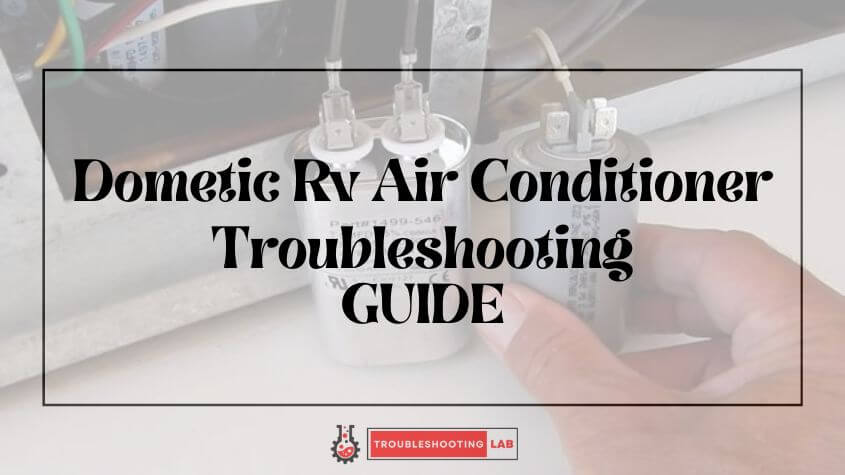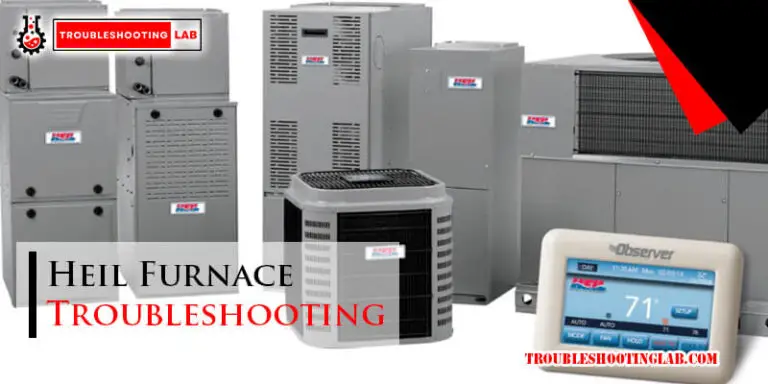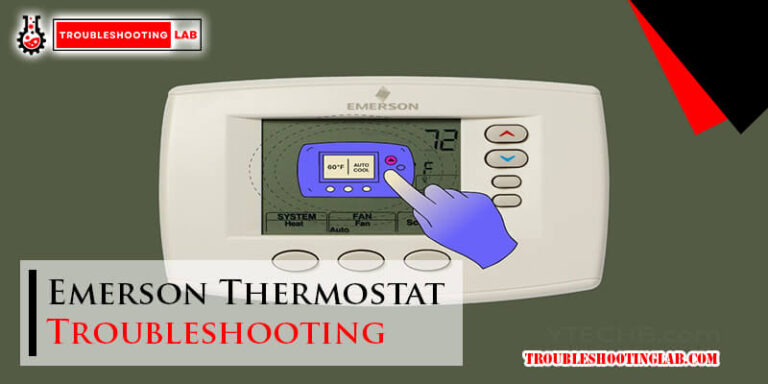Dometic Rv Air Conditioner Troubleshooting: Quick Fixes
To troubleshoot a Dometic RV air conditioner, check the air filters and coils for dirt and debris and clean or replace them if necessary. Make sure there are no dry leaves or spiderwebs obstructing the air flow.
If the unit is not cooling properly, it may indicate a faulty compressor, which can be identified by lukewarm or cool air being blown out. Consider hiring a professional for compressor replacement if needed. Blocked or clogged condenser coils can also cause the air conditioner to run but not cool, so ensure they are clear of any obstructions.
Common Problems With Dometic Rv Air Conditioner

Experiencing common problems with your Dometic RV air conditioner? Troubleshooting can help identify issues such as short cycling or lack of cooling. Check air flow and clean/replace dirty components like filters and coils to improve performance.
AC Is Running But Not Cooling
If you find that your Dometic RV air conditioner is running but not cooling, there are a few common problems that could be causing this issue. One possible cause is dirty air filters and coils. Over time, these components can become clogged with dust, dirt, and debris, restricting air flow and preventing the cooling process. To fix this, simply clean your air filters and coils regularly, or consider replacing them if they are too dirty.
Another potential cause of your AC running but not cooling is the presence of dry leaves and spiderwebs in the unit. These obstructions can block air flow and inhibit the cooling effect. Inspect your air conditioner and remove any visible debris. If necessary, you can use a soft brush or vacuum to gently clean out the unit.
If cleaning the air filters, coils, and removing debris doesn’t solve the problem, it could be an indication of a more significant issue, such as a refrigerant leak or a faulty compressor. In such cases, it is recommended to contact a professional technician to diagnose and fix the problem.
AC Blowing Warm Air
Another common problem with Dometic RV air conditioners is when the unit blows warm air instead of cool air. One possible cause of this issue is a blocked or clogged condenser coil. The condenser fan draws air into the outdoor unit through the condenser coil to pull heat energy out of your RV. If the coil is blocked or clogged, it can’t effectively transfer heat, resulting in warm air being blown into your RV.
To resolve this issue, thoroughly clean the condenser coil using a soft brush or vacuum to remove any dirt or debris that may be blocking the airflow. Be sure to turn off the power before attempting any cleaning or maintenance. If cleaning the condenser coil doesn’t solve the problem, it may indicate a more significant issue, such as a refrigerant leak or a malfunctioning compressor. In such cases, it is best to consult a professional for further diagnosis and repair.
AC Compressor Runs But Fan Does Not
If your Dometic RV air conditioner’s compressor is running, but the fan is not, there are a few potential causes. One common cause is a faulty fan motor. Over time, the fan motor can wear out or become damaged, preventing it from spinning and circulating the air.
To troubleshoot this issue, start by checking the fan motor for any visible signs of damage, such as loose wires or burnt-out components. If everything appears to be in order, test the motor using a multimeter to determine if it is receiving power. If the motor is not receiving power, it may indicate a wiring or control board issue that requires professional attention. However, if the motor is receiving power but still not working, it is likely that the motor needs to be replaced.
In conclusion, understanding common problems with Dometic RV air conditioners can help you troubleshoot and resolve issues quickly. Remember to regularly clean and maintain your air filters, coils, and condenser coil to ensure proper cooling. If the problem persists, it is best to seek professional assistance to diagnose and fix the issue.
Troubleshooting Steps
Need help troubleshooting your Dometic RV air conditioner? Follow these steps to identify and resolve issues with your AC unit, ensuring optimal cooling during your travels.
Clean Air Filters And Coils
In order to troubleshoot your Dometic RV air conditioner, it’s important to start by cleaning the air filters and coils. Over time, these components can accumulate dust, dirt, and debris, which can hinder the performance of your air conditioner.
To clean the air filters, simply remove them from the air conditioner unit and gently wash them using mild soap and water. Allow them to dry completely before reinserting them.
Next, clean the coils using a soft brush or a vacuum cleaner with a brush attachment. Be sure to remove any debris that may have accumulated on the coils, as this can obstruct airflow and reduce the cooling efficiency of your air conditioner.
Check And Remove Any Debris
In addition to cleaning the filters and coils, it’s important to check for any debris that may have accumulated in or around the air conditioner unit. Leaves, twigs, and other debris can obstruct airflow and prevent your air conditioner from functioning properly.
Make sure to inspect the area around the unit and remove any debris that you find. Use a soft brush or a vacuum cleaner with a brush attachment to gently remove any loose debris from the unit. Be careful not to damage any components while doing so.
Inspect And Replace Capacitors
Capacitors are essential components of your Dometic RV air conditioner, as they help to regulate the electrical currents that power the unit. Over time, capacitors can become worn out or damaged, which can result in your air conditioner not working properly.
To troubleshoot this issue, carefully inspect the capacitors for any signs of damage, such as bulging or leaking. If you notice any such signs, it’s recommended to replace the capacitors with new ones.
Check For Proper Airflow
Proper airflow is crucial for the efficient operation of your Dometic RV air conditioner. If you notice that the airflow from your air conditioner is weak or non-existent, it may indicate a problem with the blower motor or the fan.
Start by checking the blower motor and fan to ensure they are functioning correctly. If you notice any unusual noises or vibrations, it may be necessary to replace these components.
Additionally, check for any obstructions in the air ducts or vents. Make sure they are clear from any blockages that may be inhibiting the airflow. If necessary, use a soft brush or a vacuum cleaner with a brush attachment to remove any debris.
Test The Compressor
The compressor is responsible for compressing the refrigerant gas and circulating it through the air conditioning system. If the compressor is not functioning properly, it can result in your air conditioner not cooling effectively.
To test the compressor, listen for any unusual noises when the air conditioner is running. Additionally, check if the air coming out of the unit is cool. If you suspect a problem with the compressor, it’s recommended to contact a professional technician for further diagnosis and repair.
Signs Of A Bad Compressor
Is your Dometic RV air conditioner not cooling properly?
One sign of a bad compressor is if the air coming from the unit is lukewarm or cool instead of hot. Consider checking the compressor if your RV’s AC is running but not cooling effectively.
Lukewarm Or Cool Air Coming Out
If you notice that the air coming out of your RV air conditioner is lukewarm or cool instead of hot, it could be a sign of a bad compressor.
To check if this is the issue, simply hold your hand near the fan on the air conditioning unit. If the air is not hot but instead lukewarm or cool, it’s a strong indication that your compressor may be experiencing problems. A malfunctioning compressor fails to compress the gas properly, resulting in inadequate cooling.
Ac Unit Not Compressing Gas Properly
A properly functioning RV air conditioner compresses the gas in its system to cool down the air before blowing it out into your RV.
However, if you find that your AC unit is not compressing the gas properly, it could be a symptom of a bad compressor. This can lead to a significant decrease in the cooling efficiency and the inability to maintain a comfortable temperature inside your RV. It’s crucial to address this issue promptly to prevent further damage and ensure optimal air conditioning performance.
Condenser Coil Blocked Or Clogged
Another common sign of a bad compressor in your RV air conditioner is a blocked or clogged condenser coil. The condenser coil plays a vital role in the cooling process, as it helps to transfer heat energy from inside your RV to the outside.
If the condenser coil becomes blocked or clogged by debris such as dirt, dust, or leaves, it can hinder the heat transfer and cause the compressor to work harder. This puts unnecessary strain on the compressor and can lead to its failure if not addressed promptly.
Regular cleaning and maintenance of the condenser coil can help prevent this issue and ensure optimal cooling performance.
Repair And Maintenance Tips
Discover essential repair and maintenance tips for troubleshooting Dometic RV air conditioners in Austin, Texas. Learn how to fix common issues like short cycling and ensure your AC is running efficiently for a cool and comfortable journey.
Replacing Parts And Tools
When it comes to Dometic RV air conditioner troubleshooting, one of the essential repair and maintenance tips is replacing faulty parts and having the right tools on hand. If you notice that your RV air conditioner is not cooling as it should, it could be due to worn-out or damaged components. To determine which parts need replacement, it is crucial to conduct a thorough inspection of the unit.
Some common parts that may need replacing include the capacitor, compressor, condenser fan motor, and thermostat. These components play a vital role in the proper functioning of your RV air conditioner, and if any of them are faulty, it can affect its cooling performance.
It is recommended to refer to the manufacturer’s manual or consult with a professional to ensure you are replacing the correct parts. Additionally, having the right tools for the job is crucial to ensure a smooth and efficient repair process.
Here are some common tools you may need for Dometic RV air conditioner troubleshooting and replacement:
- Screwdriver set
- Wire cutters
- Multimeter
- Socket set
- Adjustable wrench
- Condenser coil brush
Ensuring you have these tools readily available will save you time and make the repair process more manageable.
Checking The Control Board
The control board of your Dometic RV air conditioner is responsible for regulating the unit’s operation. If there is an issue with the control board, it can lead to various problems, such as the air conditioner not turning on or not cooling properly.
To troubleshoot the control board, you can follow these steps:
- Start by turning off the power to the air conditioner.
- Locate the control board, usually located inside the unit’s interior or on the rooftop.
- Visually inspect the control board for any visible damage, such as burnt or melted components.
- Using a multimeter, test the voltage at the control board connections to ensure it is receiving power.
- If the control board is damaged or not receiving power, it may need to be replaced. Consult the manufacturer or a professional for guidance on obtaining the correct replacement.
By checking the control board, you can identify any issues and take the necessary steps to rectify them, ensuring your Dometic RV air conditioner operates efficiently.
Inspecting And Cleaning The Evaporator
The evaporator is a vital component of your Dometic RV air conditioner, as it is responsible for removing heat and humidity from the air inside your RV. Over time, the evaporator coil can accumulate dirt, dust, and debris, hindering its performance and causing the air conditioner to function poorly.
To inspect and clean the evaporator, follow these steps:
- Turn off the air conditioner and disconnect the power.
- Locate the evaporator coil, usually located inside the unit’s interior.
- Visually inspect the coil for any visible dirt or debris buildup.
- Using a condenser coil brush, gently remove any dirt or debris from the coil.
- Ensure that the coil is clean and free from any obstructions.
Regularly inspecting and cleaning the evaporator coil will improve the efficiency and performance of your Dometic RV air conditioner, allowing it to cool your RV more effectively.
Testing The Amperage Switch
The amperage switch is a safety feature in Dometic RV air conditioners that shuts off power to the compressor if it detects a high amperage draw. If the switch is faulty or incorrectly set, it can cause your air conditioner to malfunction.
To test the amperage switch, follow these steps:
- Turn off the air conditioner and disconnect the power.
- Locate the amperage switch, usually located near the compressor.
- Using a multimeter, set it to the amperage reading range.
- Connect the multimeter leads to the switch terminals.
- Activate the air conditioner and monitor the amperage reading on the multimeter.
- If the amperage reading exceeds the recommended limit or if there is no reading at all, the switch may need to be adjusted or replaced.
Testing the amperage switch is crucial to ensure the safe and efficient operation of your Dometic RV air conditioner.
Proper AC Shroud Removal
The AC shroud of your RV air conditioner protects the internal components from external elements such as rain, dust, and debris. Removing the shroud is necessary for accessing and inspecting the various parts of your air conditioner.
To remove the AC shroud properly, follow these steps:
- Turn off the air conditioner and disconnect the power.
- Carefully locate and remove the screws or fasteners securing the AC shroud to the unit.
- Slowly lift the shroud, taking care not to damage any wiring or components.
- If necessary, enlist the help of another person to assist in safely removing the shroud.
When removing the AC shroud, it is essential to be cautious and follow the manufacturer’s instructions to prevent any damage or accidents.
By adhering to these repair and maintenance tips, you can troubleshoot and resolve common issues with your Dometic RV air conditioner, ensuring it operates efficiently and provides optimal cooling for your RV adventures.
Frequently Asked Questions
Where Is The Reset Button On A Dometic Rv Air Conditioner?
The reset button on a Dometic RV air conditioner is typically located on the control panel. Press the button to reset the unit if it is not working properly.
Why Is My Rv Ac Running But Not Cooling?
Check and clean the air filters, coils, and remove any debris like dry leaves or spiderwebs. Consider replacing these parts if they are too dirty. Also, check the airflow. If the air conditioner overheats easily, these measures can help fix the issue.
How Do I Know If My Rv Ac Compressor Is Bad?
To determine if your RV AC compressor is bad, feel the air near the fan on the unit. If the air is lukewarm or cool instead of hot, it may indicate compressor problems. Consider cleaning or replacing dirty parts like air filters and coils.
Ensure proper airflow for the AC system to prevent overheating.
Why Is My Ac Running But Not Cooling?
If your AC is running but not cooling, clean the air filters and coils and remove any debris. If they are too dirty, consider replacing them. Check for blocked or clogged condenser coils. If air is not being drawn in properly, it can’t remove heat from your home.
Consider calling a professional if none of these solutions work.
How Can I Fix My Dometic Rv Air Conditioner That Is Not Cooling?
If your Dometic RV air conditioner is not cooling, try cleaning the air filters, coils, and removing any debris. If that doesn’t work, consider replacing the dirty parts.
Conclusion
To ensure your Dometic RV air conditioner is running smoothly, it’s important to troubleshoot any issues that may arise. By regularly cleaning the air filters and coils, as well as checking for any blockages, you can prevent your AC from running but not cooling.
Additionally, paying attention to the compressor’s performance and airflow can help identify potential problems. Remember, if your AC is not blowing cold air, try troubleshooting with the help of online tutorials and resources. By following these steps, you can keep your Dometic RV air conditioner in optimal condition for your comfort while on the road.






